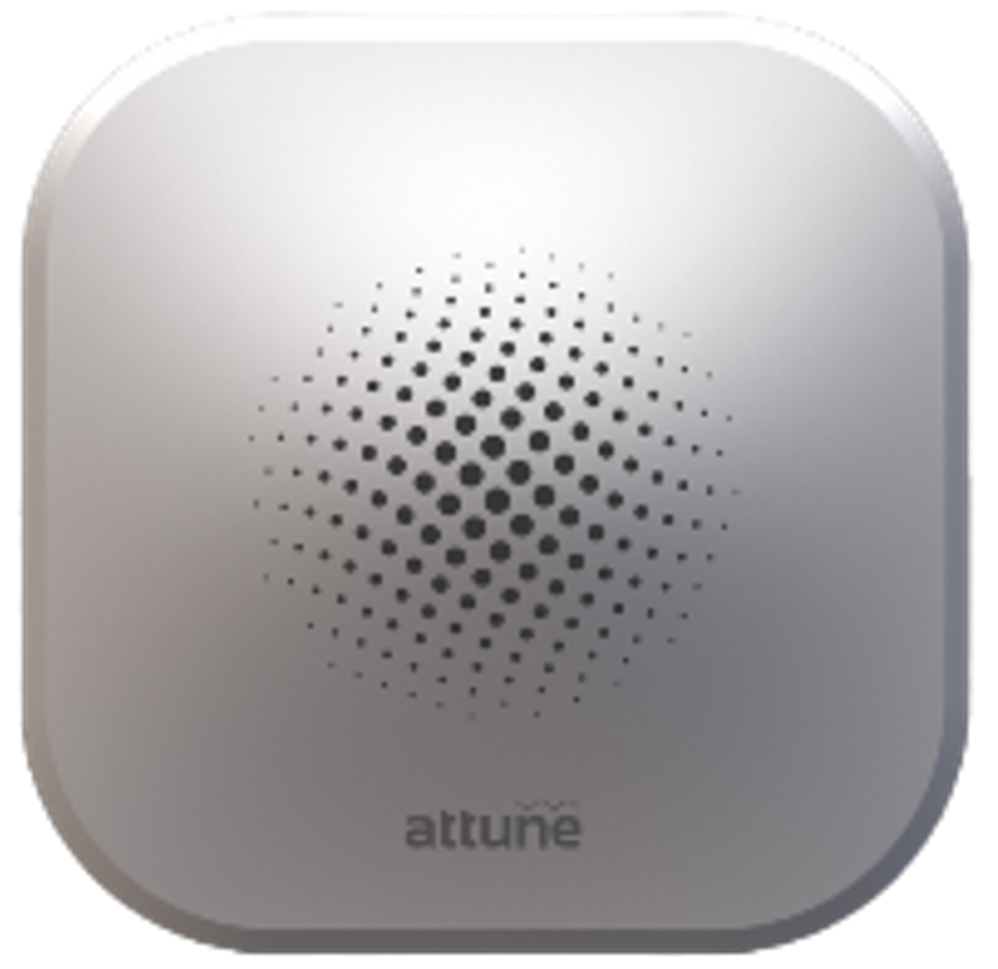Contact Us
45 West Gude Drive, Suite 4000
Rockville, MD 20850
Email: Sustainability@mcpsmd.org
Phone: 240-740-3210
Fax: 301-279-3005

Where are these sensors located in MCPS schools?
Sensors have been placed in–
- all classrooms,
- cafeterias and all-purpose rooms, and
- media centers.
What do the sensors look like?
Two models of sensor boxes have been deployed throughout MCPS. The sensors won’t be noticeable or disrupt classroom activities; they are small white boxes that look very similar to an Apple TV box affixed to a wall. Although there are two exterior models that may appear different on the outside (pictured below), the inner components have been standardized throughout the school system. There is no need to worry if you see blinking lights; they indicate various communications statuses of the devises. Examples of each type of sensor are pictured below.


How do the sensors work?
Sensors are placed in strategic locations of rooms and record temperature, humidity, and carbon dioxide (CO2). The sensors also detect the presence of airborne pollutants such as particulate matter (PM), volatile organic compounds (VOCs), ozone (O3), and carbon monoxide (CO).
The size of the facility determines the number of sensors installed and the sampling locations. A typical elementary school has more than 30 sampling locations with an average of 300 sensors.
Each sensor collects and transmits minute-by-minute data to a central computer platform. That data is then analyzed and reviewed by our facilities management team members who evaluate, triage, and take corrective action or coordinate repairs as necessary.
Will my child’s school be participating?
All Montgomery County Public Schools will have indoor air quality sensors for upcoming school year and moving forward. Installation has been completed at all existing schools. Spaces that have been newly constructed or renovated for Fall 2023 occupancy will have sensors installed by the end of December 2023.
Who and what is Attune?
Attune, formerly known as Senseware, is a leader in wireless, sensor-based monitoring systems. The Attune technology is a first-of-its-kind sensor-based Internet of Things (IoT) platform supported by 52 patents.
This contract was awarded to Attune following the Request for Proposal process. The Board of Education approved the contract award on August 23, 2022.
Is MCPS the only school district using Attune?
Attune has successfully demonstrated improved indoor air monitoring capabilities while working with many school districts across the United States, including:
- District of Columbia Public Schools
- Atlanta Public Schools (Georgia)
- Monterey County Schools (California)
- Prince William County Public Schools (Virginia)
- Denver Public Schools (Colorado), and
- Clark County School District (Nevada).
Where can I learn more about Indoor Air Quality recommended values?
The sensors measure various parameters that indicate comfort, particles that can be respired (breathed in), and ventilation quality.
Temperature and humidity are considered indicators of comfort. Temperatures between 68°F and 76°F and humidity between 30% and 70% are considered ideal for comfort, cognitive performance, and health.
When we breathe air, sometimes there are small particles in the air. When we measure Particulate Matter (PM), we count the mixture of solid particles and liquid droplets found in the air. PM1.0 and PM2.5 measure the amount of particulate matter smaller than 1.0 micron and 2.5 microns, respectively, also known as fine particles, which can pose the greatest risk to health. For reference, the diameter of human hair is about 70 microns.
The World Health Organization (WHO) guidelines state that annual average concentrations of Particulate Matter below 2.5 microns (PM2.5) should not exceed 5 µg/m3, while 24-hour average exposures should not exceed 15 µg/m3 more than 3-4 days per year. There is no standard set by the U.S. Environmental Protection Agency (EPA), but more information can be found on their website: https://www.epa.gov/pm-pollution.
Carbon Dioxide (CO2) is produced from human respiration and tends to increase as more people are present in a building. CO2 levels below 1200 parts per million (ppm) are considered ideal for cognitive performance and proper ventilation. There may be occasions when levels rise higher than this, and if sustained, facilities staff will triage and investigate. In some situations, the data may be used to inform our HVAC capital modification program.
Total Volatile Organic Compounds (TVOCs) are gases emitted from certain solids or liquids. They include a variety of chemicals, some of which may have short-and long-term adverse health effects. TVOC measurements are used as an indicator to determine if more specialized monitoring for specific VOCs should be performed. More information can be found on the EPA website: https://www.epa.gov/indoor-air-quality-iaq/volatile-organic-compounds-impact-indoor-air-quality.
Please note that this Web page contains links to one or more pages that are outside MCPS. MCPS does not control the content or relevancy of those pages.